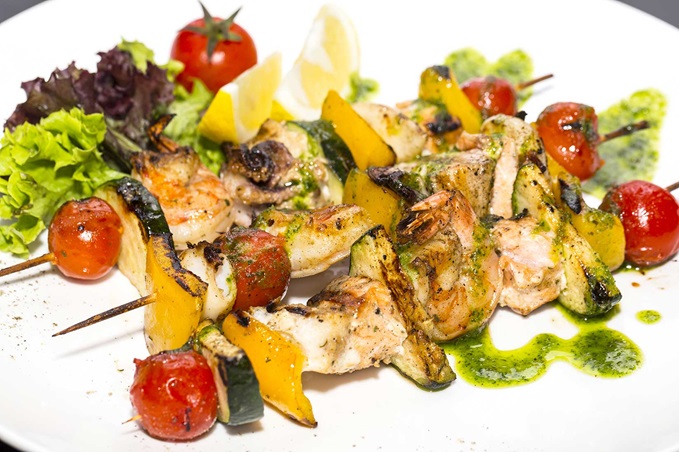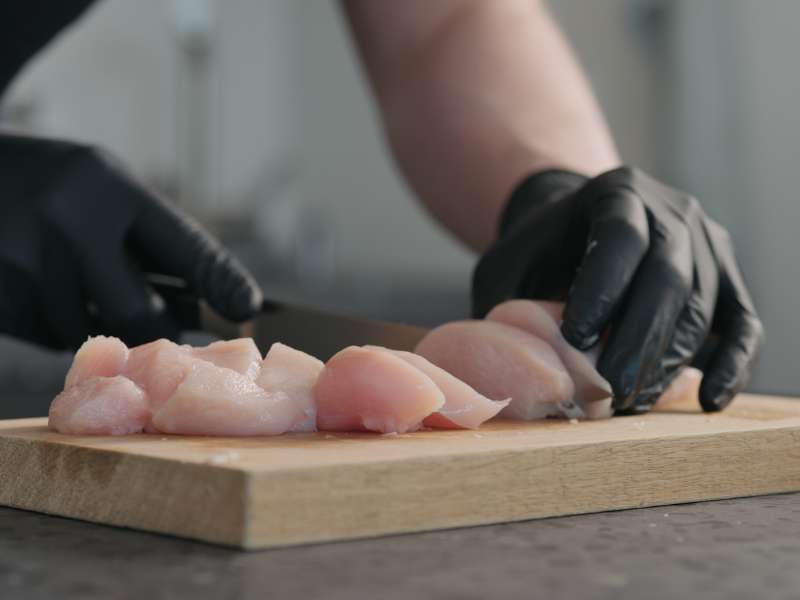With the industry-wide shift toward more online ordering and to-go orders, servers are a missing piece in the restaurant equation.
The server bridges the gap between the printed menu and customer expectations, letting guests know what to expect in terms of portion size, composition, and flavor, and reacting to requests for recommendations. Now, with increasing frequency, customers are placing orders without interacting with the restaurant’s staff, and that can lead to confusion.
Since servers can’t step in and answer questions for customers who are ordering online, it falls on the menu itself to do the heavy lifting, and in many cases, a few simple updates to your menu can make the difference between a confused customer and a satisfied one. Let’s look at some simple steps you can take to improve the clarity and readability of your menu.
Add Descriptive Language
Not too long ago, simply worded menus were in style, especially among fine dining concepts, which may have listed three or four ingredients with no further explanation. In order to eliminate the confusion that this menu style can lead to, revisit your menu as though you’ve never seen any of the dishes before. What questions come to mind? Your menu description should answer those questions.
Here’s an example:
Let’s say you have shrimp kabobs on your menu. Your original menu description might say,
“Greek Shrimp Kabobs with seasonal vegetables and tzatziki, served over rice.”
 For your online menu, you could change the description to say, “Greek Shrimp Kabobs -- Two kabobs with three shrimp each and an assortment of vegetables, including onions, mushrooms, and tomatoes. Comes with a yogurt-based tzatziki sauce for dipping. Served over a lemon-parsley rice pilaf. Serves one guest as a light dinner portion. Make it a larger meal by adding a Side Salad.”
For your online menu, you could change the description to say, “Greek Shrimp Kabobs -- Two kabobs with three shrimp each and an assortment of vegetables, including onions, mushrooms, and tomatoes. Comes with a yogurt-based tzatziki sauce for dipping. Served over a lemon-parsley rice pilaf. Serves one guest as a light dinner portion. Make it a larger meal by adding a Side Salad.”
For each menu item, you should also clearly call out any of the 7 major allergens: cow’s milk, eggs, peanuts, tree nuts, soy, shellfish, and wheat. Allergy sufferers are used to having to ask about allergens when they order in restaurants, but this becomes complicated when ordering online, so make it easy, and your customers with allergies will appreciate it.
You may also want to note if menu items are vegan, vegetarian, or gluten-free, using special symbols for quick identification. As always, it’s smart to include a disclaimer on your menu regarding cross contamination so that guests understand that dishes are being produced near other ingredients that may come in contact with the food they’ve ordered.
If you have information regarding the nutritional value of your menu items, your online menu is a great place to highlight this. You can link to the nutritional information on a separate page if you don’t want to clutter your main menu pages.
Suggest Combinations
If you can no longer rely on servers to guide your guests’ experiences, it’s important that the menu does the job for you. Creating successful combinations of menu items will help guests understand what they’re getting and how many people the meal will serve. Take inspiration from fast casual concepts, which do a good job of bundling menu items. A “You Pick Two” concept is a great example of a simple way to bring two categories of dishes together and let guests customize their experience, with a final product that serves as a full meal. Look for opportunities within your own menu to do this. Look at the way guests combined menu items when they were able to dine in person, and reproduce those duos as one-click combos on your online menu.
When guests click on each menu item, many online menu platforms will allow you to suggest other items in a drop-down menu. This can be an easy way to help guests create full meals while upselling starters, sides, and sauces as add-ons.
Share Staff Picks
Some guests are all about server recommendations. Even though they might not come in contact with a server, guests still crave these ‘expert’ recommendations, so include some on your menu. You can create a tab for “Server Picks” and highlight the favorite menu items of some of your seasoned staff. This is a unique, innovative touch that can help customers make the best decision for their orders, while connecting back to the real-life people who are part of your business.
An example could look like this:
Tina’s Pick -- Crab Cakes -- Two Chesapeake Bay Crab Cakes, lightly breaded and seasoned with whole grain mustard and dill; served with lightly steamed crisp green beans and cauliflower puree. Tina says, “This is a light but filling meal, perfect for anyone who loves fresh crab meat. Sometimes, I’ll add a salad, or start the meal with the oyster on the half shell appetizer. This pairs well with our house white wine!”
Include Photography
Vivid menu descriptions are great, but remember: A picture is worth 1000 words. Now would be a good time to generate some high-quality photography of your menu items, especially the dishes that stick around from season to season.
This is a sales tool, so it may be worthwhile to hire a pro to snap photos of menu items every few months. Just make sure you have a clear agreement with your photographer so that you understand exactly what you can do with those photos. Some agreements may allow you to use the photos in-house for menus and marketing materials but prohibit their use for paid advertising. Use the photography on your online menu and website, and highlight dishes on social media, linking back to your website to help drive sales.
Share Guest Feedback
We know that referrals and reviews go a long way. Guests will appreciate knowing what other customers have said about their dining experience, so consider adding guest feedback to your website and even to your menu. The more descriptive the feedback, the better it will be for helping other customers make informed decisions, and that confidence will lead to increased sales and satisfaction.



